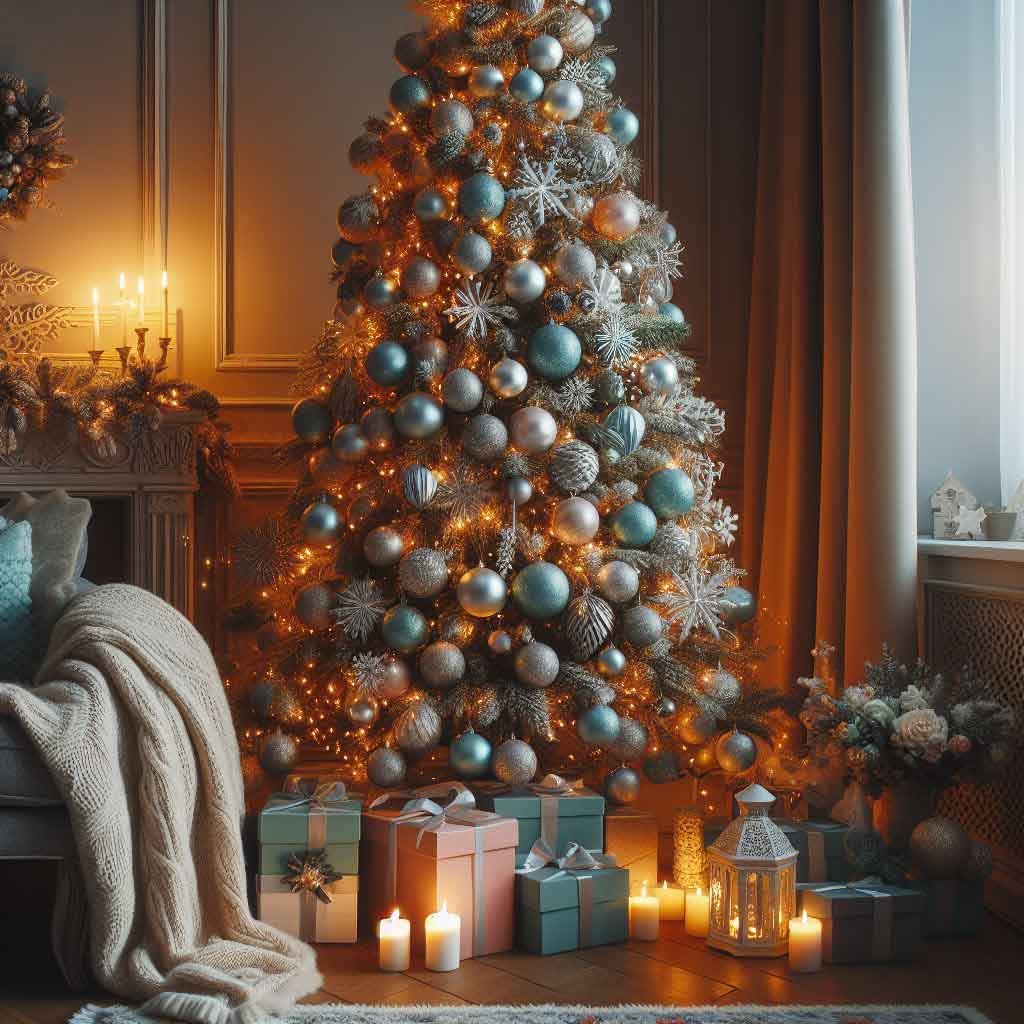As the New Year festivities approach, many of us find ourselves facing a crucial decision: a real Christmas tree or an artificial one? In recent years, artificial Christmas trees have been gaining popularity due to their low maintenance and the ability to reuse them for several years. However, making the right choice involves considering several important factors.
1. Materials and quality of construction
Selecting the right material for your artificial Christmas tree is a crucial decision that can significantly impact its appearance, durability, and overall quality. With various options available, it's essential to understand the characteristics of different materials to make an informed choice.
- Polyethylene (PE):
- Advantages: PE is known for its natural look and feel, closely resembling real tree needles. Trees made from polyethylene tend to be more realistic and may have a softer texture.
- Disadvantages: PE trees are often pricier compared to other options, but many find the enhanced realism justifies the cost.
- Polyvinyl Chloride (PVC):
- Advantages: PVC is one of the most common materials for artificial Christmas trees. PVC trees are lightweight, durable, and usually more affordable. They come in various shapes and sizes.
- Disadvantages: Some lower-quality PVC trees may appear less realistic, but advancements in manufacturing have led to more lifelike options.
- Plastic:
- Advantages: Plastic is lightweight, durable, and long-lasting. It is a popular choice for artificial trees due to its affordability and ability to maintain shape over time.
- Disadvantages: Cheaper plastic trees may lack the realism of more expensive options, but high-quality versions can provide a natural appearance.
- Polyester:
- Advantages: Polyester trees often feature soft, fluffy needles, creating a cozy and inviting appearance. They can add a touch of elegance to your holiday decor.
- Disadvantages: Polyester trees may be less resistant to deformation than those made from other materials, and they may be more prone to wear and tear.
- Blended Materials:
- Advantages: Some artificial trees combine different materials to achieve a balance between realism, durability, and affordability.
- Disadvantages: Blended material trees may have a higher price point, but they often offer a well-rounded compromise.
When making your decision, consider the overall quality, realism, and personal preferences. Take note of how the materials imitate real needles and whether the tree aligns with your aesthetic preferences and budget.
The best material for your artificial Christmas tree ultimately depends on your priorities. Whether you prioritize realism, affordability, or a blend of features, understanding the characteristics of different materials will help you make an informed decision and bring home a tree that adds to the festive charm of your holiday celebrations.
When selecting an artificial Christmas tree, it's essential to pay attention to the materials used in its construction. High-quality artificial trees are typically made from polymer materials that mimic the needles of real trees. The strands should be sturdy, and the colors should be natural and vibrant. Additionally, consider the tree's frame – it should be stable and reliable.
2. Height and shape
Artificial Christmas trees come in various sizes and shapes. Your choice will depend on personal preferences and the dimensions of the room where the tree will be placed. Ensure that the tree's height matches the ceiling height, and the shape complements your aesthetic preferences. From classic to more modern shapes, the market offers numerous options to suit any interior style.
3. Needle density
While artificial trees don't have real needles, many manufacturers successfully replicate their appearance. Evaluate the density and distribution of the "needles" throughout the tree. The more lifelike and dense the foliage appears, the more beautiful your tree will be.
4. Assembly and disassembly convenience
The ease of assembly and disassembly is also a crucial factor. Ensure that the process of setting up and taking down the decorations is simple and convenient. Some artificial tree models feature innovative assembly systems, allowing you to set up the tree in just a few minutes.
5. Additional Elements
Modern artificial Christmas trees may come with extra features that enhance their appeal. These can include built-in lights, musical effects, or even scent diffusers, creating an atmosphere reminiscent of a real forest.
Conclusion
When choosing an artificial Christmas tree for your celebrations, consider the materials, construction quality, size, shape, needle density, and the convenience of assembly and disassembly. Additionally, explore trees with extra features to add a touch of innovation to your holiday decor. Ultimately, an artificial Christmas tree can be a stylish and practical solution for creating a festive atmosphere in your home.
